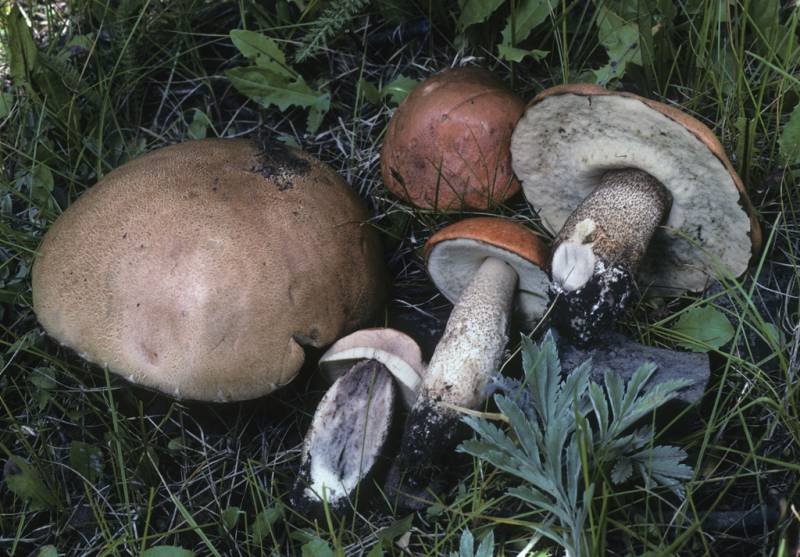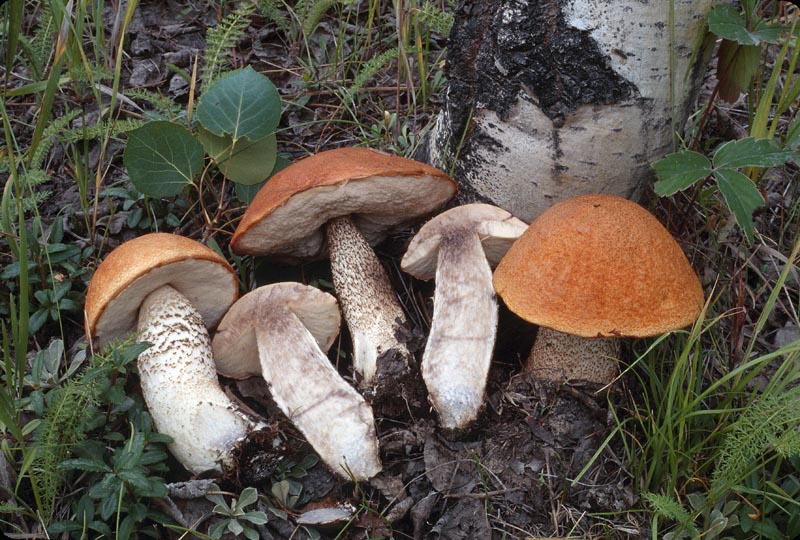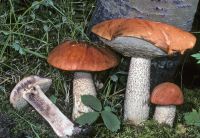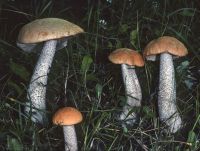Habitat: Associated with aspen
Conservation Status: Not of concern
Edibility: All of these are generally considered good, but not great, edibles, although poisonings in the Rocky Mountains and PNW associated with similar-looking leccinums suggests one should adopt a cautious approach to eating them.
aspen bolete, aspen rough-stem, aspen scaber-stalk
All of these are generally considered good, but not great, edibles, although poisonings in the Rocky Mountains and PNW associated with similar-looking leccinums suggests one should adopt a cautious approach to eating them.
L. insigne is a species with a reddish brown to rust brown or orange brown, somewhat fibrillose cap, white to olive buff or yellowish tubes that stain brownish when bruised, a white stipe with pallid to dark brown or blackish scabers, and white flesh that may change to dark gray, and sometimes with blue in the base. A large, often abundant, species that has been called L. aurantiacum occurs in our conifer forests. That name, however, is incorrect since L. aurantiacum has been shown to be associated with hardwoods. L. insigne may be closer to L. vulpinum described from Europe. It has a red to reddish orange-brown or dark reddish brown, fibrillose cap, black scabers, a bluing stipe base, and whitish flesh that changes slightly or more distinctly to grayish or blackish, sometimes after going through a vinaceous gray phase. L. ponderosum and L. manzanitae, two often massive species, are similarly colored.
PNW Herbaria: Specimen records of Leccinum insigne in the Consortium of Pacific Northwest Herbaria database
CalPhotos: Leccinum insigne photos







